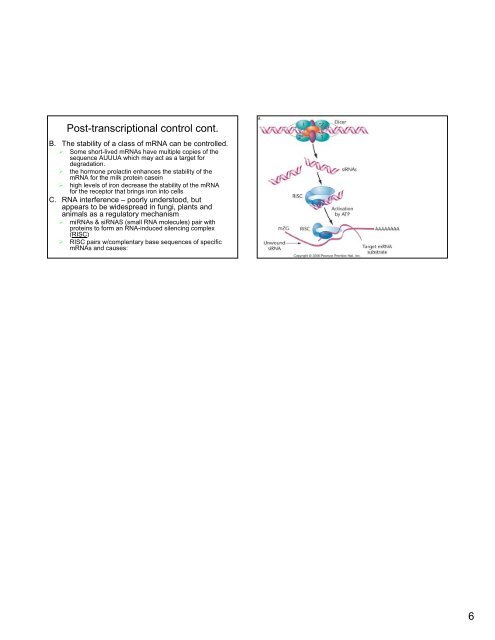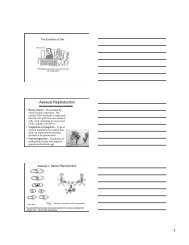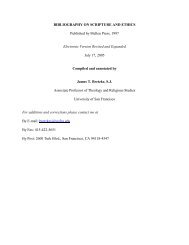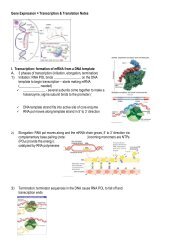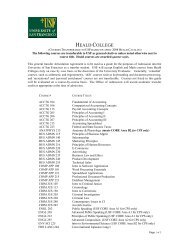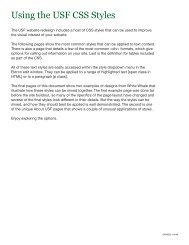Regulation of gene expression in eukaryotes
Regulation of gene expression in eukaryotes
Regulation of gene expression in eukaryotes
You also want an ePaper? Increase the reach of your titles
YUMPU automatically turns print PDFs into web optimized ePapers that Google loves.
Post-transcriptional control cont.<br />
B. The stability <strong>of</strong> a class <strong>of</strong> mRNA can be controlled.<br />
‣ Some short-lived mRNAs have multiple copies <strong>of</strong> the<br />
sequence AUUUA which may act as a target for<br />
degradation.<br />
‣ the hormone prolact<strong>in</strong> enhances the stability <strong>of</strong> the<br />
mRNA for the milk prote<strong>in</strong> case<strong>in</strong><br />
‣ high levels <strong>of</strong> iron decrease the stability <strong>of</strong> the mRNA<br />
for the receptor that br<strong>in</strong>gs iron <strong>in</strong>to cells<br />
C. RNA <strong>in</strong>terference – poorly understood, but<br />
appears to be widespread <strong>in</strong> fungi, plants and<br />
animals as a regulatory mechanism<br />
‣ miRNAs & siRNAS (small RNA molecules) pair with<br />
prote<strong>in</strong>s to form an RNA-<strong>in</strong>duced silenc<strong>in</strong>g complex<br />
(RISC)<br />
‣ RISC pairs w/complentary base sequences <strong>of</strong> specific<br />
mRNAs and causes:<br />
6


